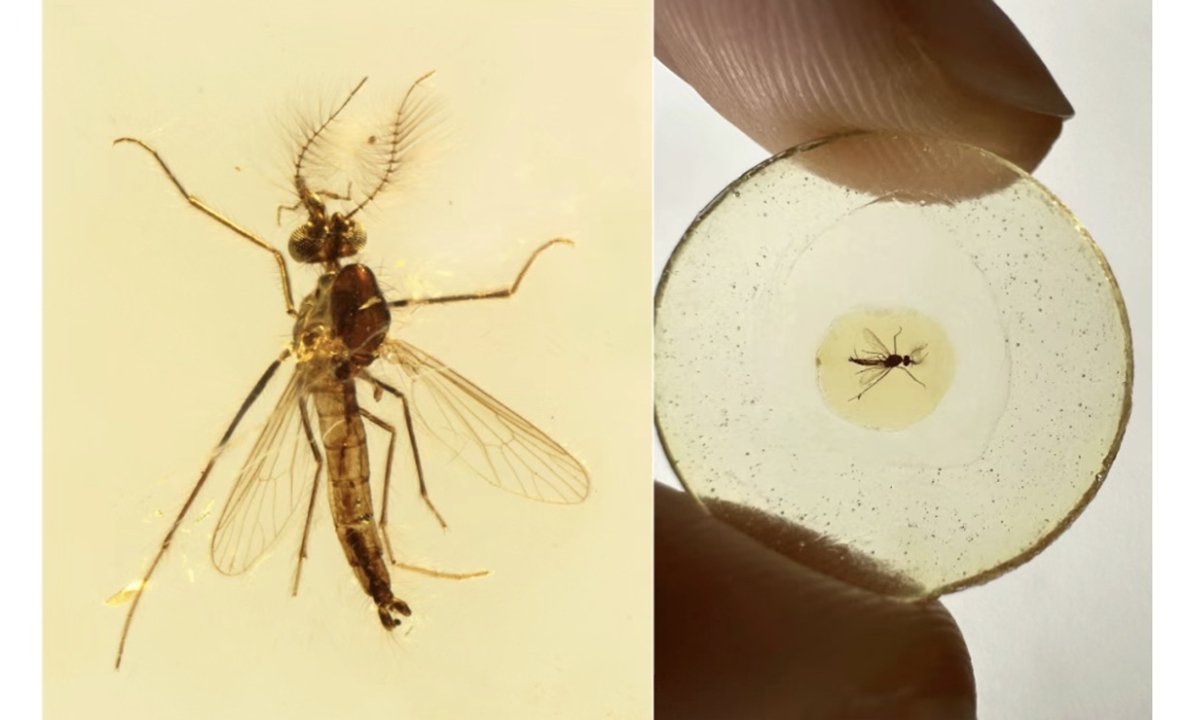A team from the Nanjing Institute of Geology and Palaeontology, affiliated with the Chinese Academy of Sciences, has made a groundbreaking discovery that is reshaping our understanding of the evolution of mosquitoes. They have uncovered a mosquito fossil encased in Lebanese amber, estimated to be around 130 million years old. This finding not only provides invaluable insights into the early stages of the Culicidae family’s evolution but also significantly pushes back the fossil record of mosquitoes.
For a long time, it was believed that only female mosquitoes were bloodsuckers, a trait essential for egg production. However, this new discovery suggests that male mosquitoes, traditionally thought to feed exclusively on flower nectar, were once blood-feeders as well. This revelation comes from the observation of two male mosquito specimens found in the Early Cretaceous period Lebanese amber. These fossils display distinctive piercing-sucking mouthparts, characteristic of blood-feeding behavior.
The research into the evolution of blood-feeding in insects, particularly mosquitoes, has been challenging due to the scarcity of fossil evidence. The Culicidae family, comprising over 3,000 species of mosquitoes, has a poorly understood origin and early evolutionary history, partly due to gaps in the fossil record. Dany Azar, a prominent Lebanese researcher at the Nanjing Institute of Geology and Palaeontology, has been instrumental in this study, having collected fossils from over 500 Lebanese amber sites.
Azar’s extensive research in these sites led to the discovery of the two male mosquitoes dating back 130 million years, significantly advancing the known fossil record of mosquitoes by nearly 30 million years. The team’s use of advanced scientific instruments, such as a laser confocal microscope and a fluorescence microscope, allowed for detailed examination of the mosquitoes’ anatomy, particularly their mouthparts.
The findings suggest that the blood-feeding behavior in male mosquitoes, which is absent in modern species, was prevalent 130 million years ago. This discovery provides crucial evidence for understanding the evolutionary history of blood-feeding in mosquitoes and could have significant implications for studying the biology and control of these insects.
In addition to Dany Azar, the research team included A. Nel, a professor at the French National Museum of Natural History; Huang Diying, a researcher at the Nanjing Institute of Geology and Palaeontology; and M. Engel, a professor at the American Museum of Natural History. The team’s findings have been published online in the prestigious journal Current Biology.
This discovery is not just a scientific breakthrough but also a testament to the intricate and often surprising paths of evolution. It challenges preconceived notions about mosquito behavior and evolution, opening new avenues for research in paleontology, entomology, and evolutionary biology. The revelation of blood-feeding behavior in ancient male mosquitoes offers a rare window into the distant past, shedding light on the complex evolutionary journey of one of the world’s most well-known and studied insects.
READ MORE:
